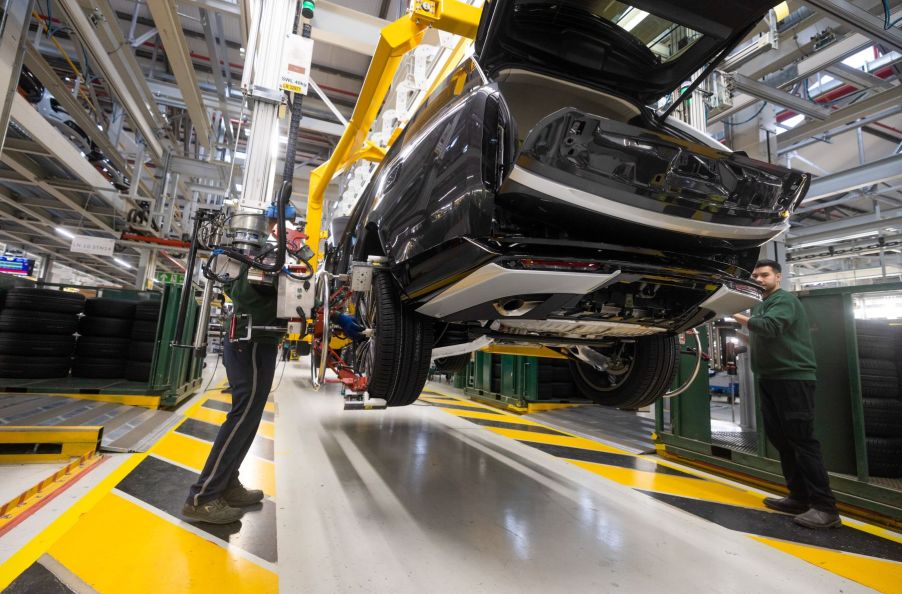
How Does a Transfer Case Work in Full-Time Four-Wheel Drive (4WD) Vehicles?
A transfer case is integral to any four-wheel drive (4WD) system. Without it, you wouldn’t be able to enjoy all of the benefits of a four-wheel drive vehicle. Transfer cases work by splitting the power outputted by the engine and transmission between the front and rear axles. Typically, off-road-focused four-wheel drive systems mechanically lock the front and rear driveshafts together, so both sides of the vehicle receive equal torque.
But how exactly do these transfer cases work in a full-time four-wheel drive vehicle? Are there different transfer cases put into use that use different internal components? Here is everything you need to know about how transfer cases work in full-time four-wheel drive vehicles and how they work in other 4WD system variations.
Transfer cases in full-time four-wheel drive vehicles
According to MotorTrend, transfer cases in full-time four-wheel drive vehicles work by always sending power to the front and rear axles at all times. Typically, these transfer cases carry less efficient fuel economy numbers due to more power being used at all times. However, modern full-time 4WD systems are much more efficient than they used to be and typically integrate a limited-slip differential, making them easier to handle on and offroad.
Full-time 4WD vehicles also usually feature a two-speed transfer case that allows drivers to lock their cars in low gear for maximum torque capabilities while offroading. Other vehicles, like all-wheel drive sedans and utes, typically have a single-speed transfer case that acts without any means for shifting into a lower range, which is fine for their on-road applications.
How it works in part-time 4WD models

In vehicles today, you are bound to see more cars that use part-time four-wheel drive systems than ones that use full-time 4WD systems. Part-time systems allow drivers to turn off 4WD and send power to rear wheels only, maximizing efficiency when on-road in good conditions when four-wheel drive isn’t necessary. These transfer cases are found in both two-speed and single-speed outputs.
Chain-driven vs. gear-driven transfer cases
Chain-driven transfer cases are the most common units found in mass-market vehicles. Chain-driven transfer cases are lightweight systems that use a heavy, durable chain to drive the internal system. While in the past, chain-stretching was a common cause of failure, modern chain-driven systems can take a lifetime of high-performance use without failure.
For those off-road drivers looking for more power, the gear-driven transfer case is the way to go. Gear-driven transfer cases use a series of gears to split power to the drive axles. While they typically handle power and offroading situations better than chain systems, they are bulky, heavy, and noisy for everyday use.
Whether you are competing in an offroading competition or commuting in a four-wheel drive Jeep or all-wheel drive Subaru, transfer cases give us the power to send power to all four wheels on our vehicles for maximum traction. Next time you drive a 4WD or AWD vehicle, look at the specs found in its transfer case and what it is capable of!




